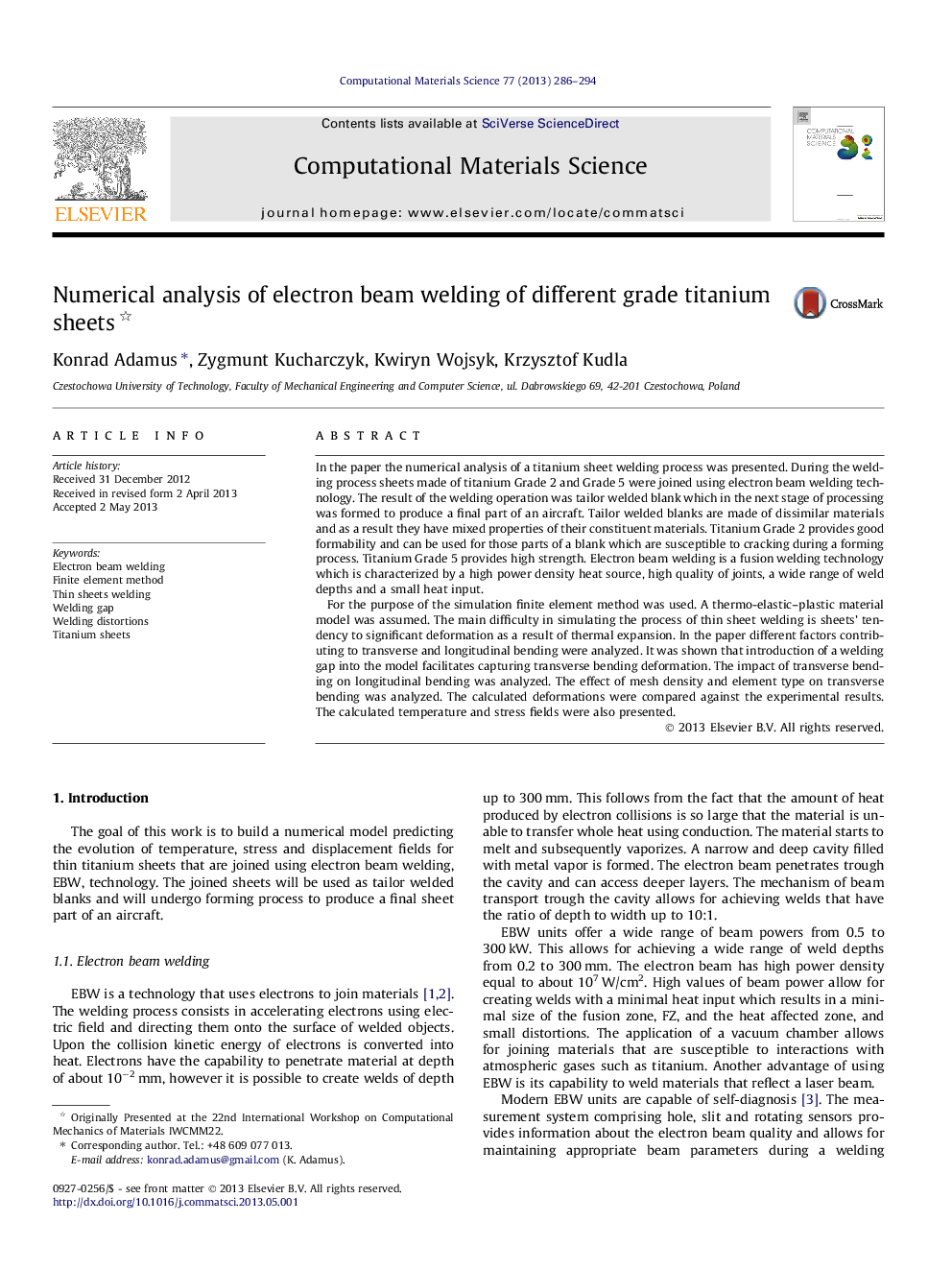| Article ID | Journal | Published Year | Pages | File Type |
|---|---|---|---|---|
| 7961808 | Computational Materials Science | 2013 | 9 Pages |
Abstract
For the purpose of the simulation finite element method was used. A thermo-elastic-plastic material model was assumed. The main difficulty in simulating the process of thin sheet welding is sheets' tendency to significant deformation as a result of thermal expansion. In the paper different factors contributing to transverse and longitudinal bending were analyzed. It was shown that introduction of a welding gap into the model facilitates capturing transverse bending deformation. The impact of transverse bending on longitudinal bending was analyzed. The effect of mesh density and element type on transverse bending was analyzed. The calculated deformations were compared against the experimental results. The calculated temperature and stress fields were also presented.
Related Topics
Physical Sciences and Engineering
Engineering
Computational Mechanics
Authors
Konrad Adamus, Zygmunt Kucharczyk, Kwiryn Wojsyk, Krzysztof Kudla,
